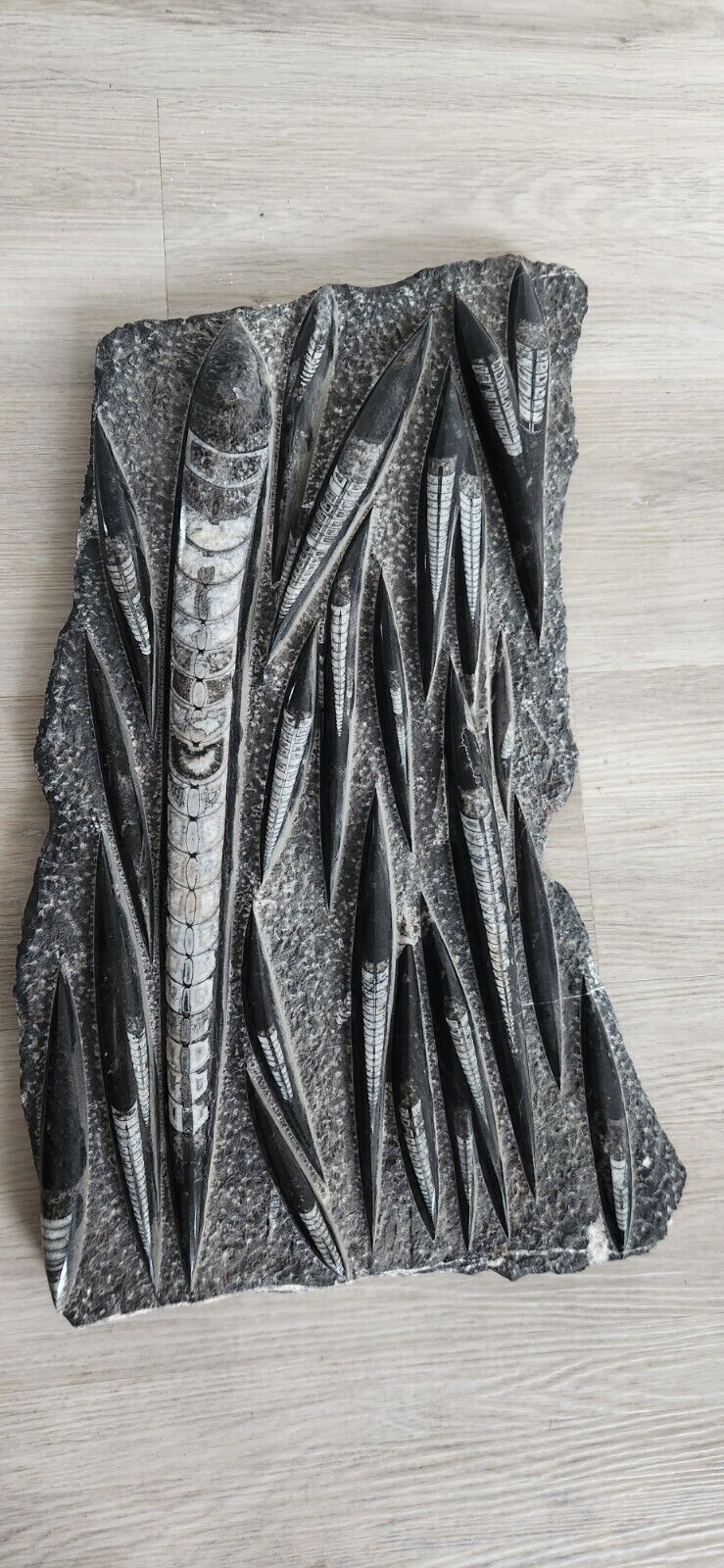-40%
Very sharp beautiful Neolithic Point from Niger made out of flintstone
$ 667.92
- Description
- Size Guide
Description
Very sharp beautiful point made out of flintstone. The subtle warm tones on this point intermix nicely on the gray toned flintstone palette. The specimen is in excellent condition, with no repair or restoration.All of our Prehistoric Man tools are collected by the foremost expert in the field. We stand by the provenance of all our material and can provide a letter of authenticity upon request.
Measurements: Height in stand: ~ 8-1/2". Actual tool: ~7-3/8" Tall x 2" Wide x 1/4" Thick Location: Tenerean Culture, Niger, Africa< Time Period: Neolithic ~5,200-2,500 BC Type of Stone: Flintstone
More Information
The Neolithic (Neo=new; Lithic=stone) era is also called the New Stone age, which began around 10,000 BC and ended between 4,500 and 2,000 BC. The Neolithic era varies in time span depending on geographic location. The Paleolithic era, which originates in the beginning of human life, continued until the Neolithic revolution. Where as Paleolithic humans lived a nomadic lifestyle in small groups consisting of twenty to thirty people; Neolithic humans farmed in permanent settlements and raised/herded animals; agriculture was discovered and became a major source of food. The concept of private property and ownership emerged for things such as land, livestock and tools. Neolithic people were shorter and had lower life expectancy, Diseases like tooth cavities and typhoid emerged in the new stone age. Neolithic women had more children because the life style was no longer nomadic. Stone tools were the norm, but began to be more sophisticated, specialized, and were often polished to a fine finish. Rocks with a high percentage of silicium dioxide (SiO2) were best suited for tools, as a sharp blow causes pieces to "flake" off, leaving sharp edges. Polished stone tools were made sharper by grinding the tool with another coarse abrasive rock to remove the chip scars either from the entire surface of around the working edges. At times the tools were also “polished”: a final grinding with a fine abrasive. Scientists consider the creation of all these tools a sign of early human ingenuity.











